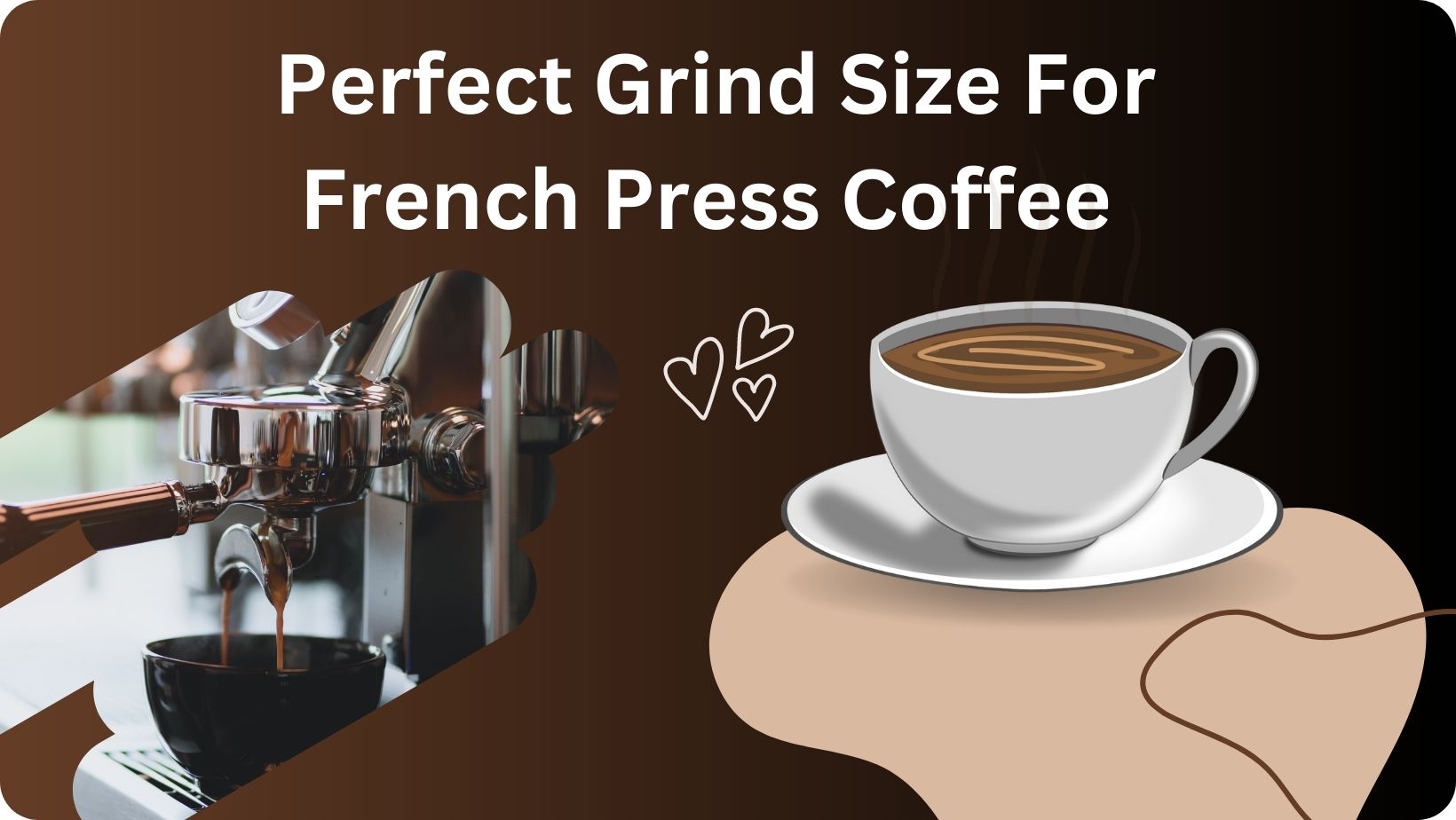Perfect Grind Size for French Press Coffee Perfect Grind Size for French Press Coffee Perfect Grind Size for French Press Coffee Perfect Grind Size for French Press Coffee Perfect Grind Size for French Press Coffee Perfect Grind Size for French Press Coffee Perfect Grind Size for French Press Coffee Perfect Grind Size for French Press Coffee Perfect Grind Size for French Press Coffee Perfect Grind Size for French Press Coffee
French press coffee is beloved for its robust and flavorful brew, and one of the critical factors that contribute to its success is the grind size of the coffee beans.
Getting the grind size just right ensures optimal extraction, resulting in a rich and well-balanced cup of coffee. In this detailed article, we will explore the best grind size for French press coffee and how to achieve it.
Perfect Grind Size for French Press Coffee
Understanding French Press Brewing
Before diving into grind sizes, it’s essential to understand the French press brewing process. Unlike other brewing methods, a French press requires a coarser grind size.
This is because the coffee grounds are immersed in hot water for an extended period, typically four to five minutes.
The coarse grind helps maintain consistent extraction and prevents over-extraction, which can lead to bitter and unpleasant flavors.
Why Coarse Grind Matters
The coarse grind size in French press coffee allows for slower extraction, resulting in a brew that is bold and full-bodied.
The larger coffee particles also make it easier to separate the grounds from the brewed coffee when pressing the plunger down.
Using a finer grind could lead to an over-extracted, murky cup, as the smaller particles can slip through the filter and continue extracting in the coffee.
Finding the Optimal Coarse Grind
While “coarse” is the general guideline, finding the exact grind size that suits your taste preferences may require some experimentation. Here’s how to determine the optimal coarse grind for your French press:
- Invest in a Burr Grinder: To achieve consistent results, invest in a burr grinder rather than a blade grinder. Burr grinders offer more control over grind size, resulting in a more uniform and accurate coarse grind.
- Start with a Medium-Coarse Grind: Begin with a medium-coarse grind setting on your burr grinder. It should resemble sea salt or breadcrumbs in texture.
- Brew and Taste: Brew a batch of French press coffee using the medium-coarse grind. Take note of the flavors, body, and overall taste profile of the coffee.
- Adjust Grind Size: Based on your taste preferences, make small adjustments to the grind size. If the coffee tastes weak or lacks body, go slightly coarser. If it tastes bitter or too strong, go slightly finer. Continue this process until you find the perfect balance.
Tips for Achieving the Best Grind Size
- Use a burr grinder to achieve a consistent coarse grind.
- Avoid using blade grinders, as they produce uneven particle sizes.
- Experiment with different grind settings to fine-tune your brew.
- Opt for high-quality, freshly roasted coffee beans for the best flavor.
Explain the need for a coarser grind due to the immersion brewing method:
The need for a coarser grind in immersion brewing methods, such as the French press, stems from the specific way these brewing techniques extract flavors from coffee grounds.
Unlike other brewing methods like espresso, pour-over, or drip brewing, immersion brewing involves steeping the coffee grounds in hot water for an extended period.
In the French press, for example, the coffee grounds are fully immersed in hot water, allowing the flavors to slowly extract over several minutes.
During this steeping process, water comes into contact with the surface of the coffee particles, extracting soluble compounds like oils, sugars, and aromatic compounds that contribute to the overall flavor of the coffee.
Here’s why a coarser grind is essential for immersion brewing methods like the French press:
1. Slower Extraction:
A coarser grind size means larger coffee particles, which slows down the extraction process. When the coffee grounds have a larger surface area, it takes more time for the water to penetrate and extract the desired flavors.
This slower extraction helps prevent over-extraction, which can lead to bitter and unpleasant flavors in the coffee.
2. Balanced Flavor:
The coarser grind allows for a balanced and well-rounded flavor profile. It ensures that the coffee’s essential oils and flavorful compounds are extracted evenly, resulting in a smooth and robust cup of coffee.
The longer steeping time allows for a thorough extraction, capturing both the delicate and bold notes of the coffee.
3. Easier Filtration:
The coarser grind size facilitates easy and efficient filtration. In a French press, a metal mesh filter separates the brewed coffee from the coffee grounds.
Larger coffee particles settle at the bottom of the press, allowing for cleaner and more effective filtration when the plunger is pressed down.
4. Consistency in Brewing:
Using a coarser grind in immersion brewing promotes consistency. When the grind size is uniform, each coffee particle extracts at a similar rate, resulting in a consistently flavorful brew every time.
5. Customizable Brew Time:
The coarser grind size allows for more control over the brew time. Depending on your taste preferences, you can adjust the steeping time to achieve a lighter or stronger cup of coffee.
Conclusion
Finding the best grind size for French press coffee is a journey of taste exploration. With the right tools, patience, and attention to detail, you can brew the perfect cup that showcases the full flavors and richness of your coffee beans.
Embrace the art of grinding, and enjoy the rewarding experience of mastering the French press brewing method to savor every sip of your aromatic and bold cup of coffee.

